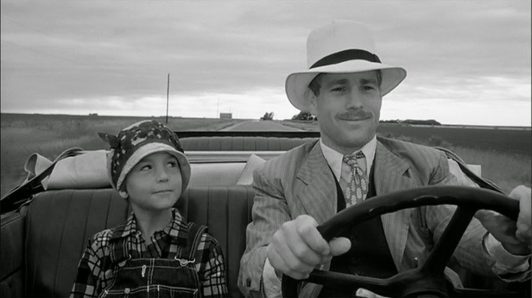Get to “I Love You” – Part 2
We said in last week’s post that an extremely useful principle of storytelling is “Get to ‘I love you’.” Meaning structure the novel or movie so that two clashing opposite or unlikely people move from indifference to each other (or outright hostility) to that great moment when they can look in each other’s eyes and say, “I love you.”
But it’s even better if the line that means “I love you” says the exact opposite. In other words, the text says one thing but the subtext says another. And the subtext wins.

In Peter Bogdanovich’s Paper Moon (from the novel “Addie Pray” by Joe David Brown), nine-year-old Addie Loggins (played by Tatum O’Neal ) is an orphan in Depression-era Kansas who goes on the road with flim-flam man Moses Pray (played by Ryan O’Neal, her real-life father). Addie’s wish through the whole story is to prove that Moses is her father in the movie—and to stay with him.
In the final sequence of the picture, Moses drops Addie off with her true aunt in Saint Joseph, Missouri, deciding that his flim-flam ways and life on the road are not healthy for a young girl. But Addie immediately bolts from the nice-but-very-dull aunt and chases Moses on foot down a country road. She catches him where he has stopped, feeling unsure about his decision. When Moses sees Addie running toward him, he gets out of his broken-down Model-T truck and confronts her.
MOSES
I told you I don’t want you ridin’ with me no more.
Addie is heartbroken. Then, suddenly, Moses’ truck’s brakes fail … the old clunker starts rolling away down a hill.
ADDIE
Mose! Look!
Moses groans, grabs the few belongings that Addie is carrying (her radio and pint-size suitcase) and dashes to catch the runaway truck. Addie follows. He leaps on board from one side, she springs up from the other. As the truck wheezes away down a road soaring to the horizon, the song “Keep Your Sunny Side Up” plays on the soundtrack.
In other words, “I love you.”
The post Get to “I Love You” – Part 2 first appeared on Steven Pressfield.


